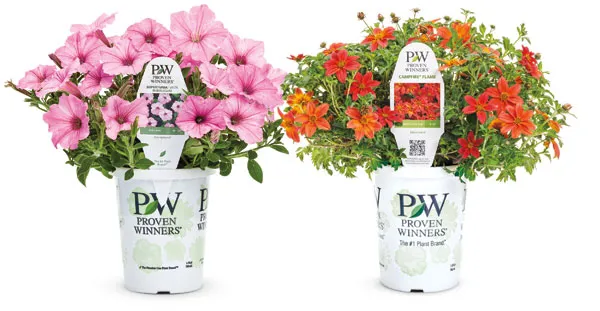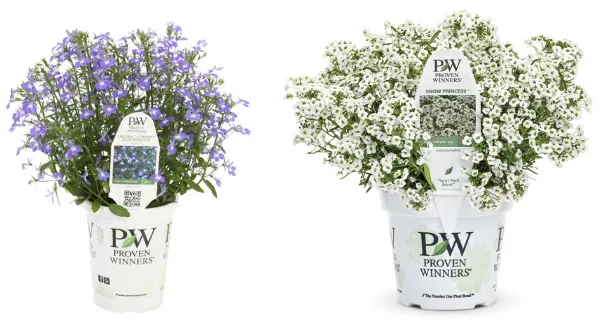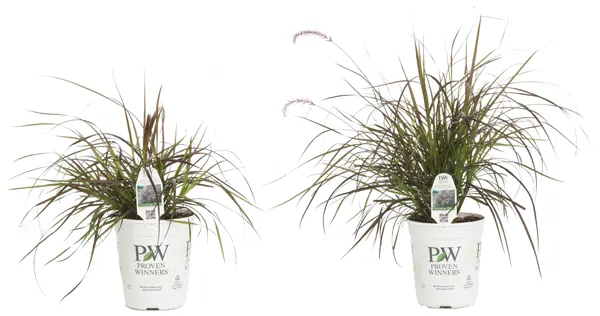“The first decision growers should make is ‘What do I grow and for what season?"' says Brian Bourdon. “Some plants are definitely better for growing in different seasons.”
He notes the best plants for early spring crops are those that flower early and readily, don’t need a lot of manipulation, and can handle some cold temperatures at retail. “We recommend varieties like Nemesia, Bright Lights Osteospermum, Bidens and Boldly Pelargonium.”
“Most varieties will work for Mother's Day or Memorial Day main spring season,” explains Bourdon. “Depending on the type of liner you choose, you can easily turn these varieties around very successfully in your greenhouse.”

Brian Bourdon, Operations Manager of Offsites & Crop Supply Chain
Varieties that don't respond well to cooler temperatures or lower light levels are ideal for late spring/early summer crops, says Bourdon. “For example, Soiree Kawaii Vinca is both heat and sun loving and we’ve had tremendous response to the fantastic new crop of Caladiums,” he adds.
Growers have great flexibility with the varieties Four Star calls “All Season All-stars,” which grow well all season long and are top sellers. They include: Superbells Calibrachoa, Supertunia Petunia, Princess and Knight Lobularia, Butterfly Argyranthemum, and Lemon Coral Sedum. He points out that Four Star uses retail sales data by variety to determine which plants sold better, for planning upcoming seasons.

Supertunia Vista Bubblegum Petunia (left) is one of several top-selling varieties that grows well throughout the season, and Campfire Flame Bidens (right) is an early spring crop that flowers easily and readily, according to Bourdon.
Some larger, more vigorous plants can be difficult to do in a smaller Grande container, which is why Four Star uses the larger Royale container for plants such as ornamental grasses, Dahlia, Canna, Cleome and others. “Royales give plants like Truffula Pink Gomphrena and Suncredible Yellow Helianthus such impact at retail and performance in the garden,” he explains.
Choose the best liner for your plants
Growers have a lot of liner options and should consider the size of containers they’ll use, as well as the characteristics of each genera, Bourdon advises. The Supernova Liners are available as 52s for many varieties. In addition, there are Supernova 50s for New Guinea Impatiens and SunPatiens, Supernova 28s for Pennisetum and Cordylena, and Four Star’s Standard Liners for all others.

Laguna Compact Blue with Eye Lobelia and Snow Princess Lobularia are two popular varieties that produce well from Standard Liners.
“Standard Liners should work just fine for small container production, but we developed the Supernova Liners for crops that can be really aggressive in their growth and also late to flower in the season,” he says. “Supernova Liners are all initiated under high pressure sodium lights to help them get uniform bud sets so they will flower early and so the entire crop will come into flower consistently at the same time. They also require no pinching, need fewer PGRs, and have increased branching, so it’s much easier for growers to be successful.”
Bourdon notes that a key advantage to Supernova Liners is that crops can finish in 4 to 6 weeks for Grandes and 6 to 9 weeks for Royales, assuming growers provide the right growing temperature. “I recommend you be mindful of the temperature, because it is one of the biggest factors in flower development. Watch your day and night temperatures and your average daily temperature. You can grow crops cooler but that can delay flower development.”
Crops that don’t benefit from the Supernova treatment will do well as Standard Liners, he adds. Two examples of this are Laguna Compact Blue with Eye Lobelia and Snow Princess Lobularia.

Supernova 28 Liners can finish in 7 to 10 weeks depending on variety. The Graceful Grasses Purple Fountain Grass Pennisetum on the right will finish more quickly as a Supernova 28, compared to the Standard 50 version on left.
Larger varieties like Pennisetum and Cordylena will finish more quickly as Supernova 28s, rather than as Standard 50s, Bourdon advises. “You can get faster turns in the 1-Gallon Royale with Supernova 28s, like 7 to 10 weeks.”
How many to plant?
When creating planting in containers of 6 inches or larger, he recommends that planters closely watch Vigor Ratings. “We use Vigor Ratings based on how aggressive and quickly different varieties grow. So, for instance, with a Vigor Rating of 1 or 2, we always plant two liners per container. Many growers get by with one liner for Vigor Rating 3 but you might fill the container out faster with two. For Vigor Rating 4, we always use one liner per container.”
Four Star University — Available on demand
This presentation and others on critical growing and management topics are available online at Four Star University OnDemand. Four Star’s growing team presents several topics such as pest management, creating combinations that sell, growing shrubs, and more.
Visit pwfourstar.com/fsu to view the videos and to request a copy of the live grower Q&A session held on October 6th.
For more informatio n:
n:
Four Star Greenhouse
734-654-6420
mail@pwfourstar.com
www.pwfourstar.com
